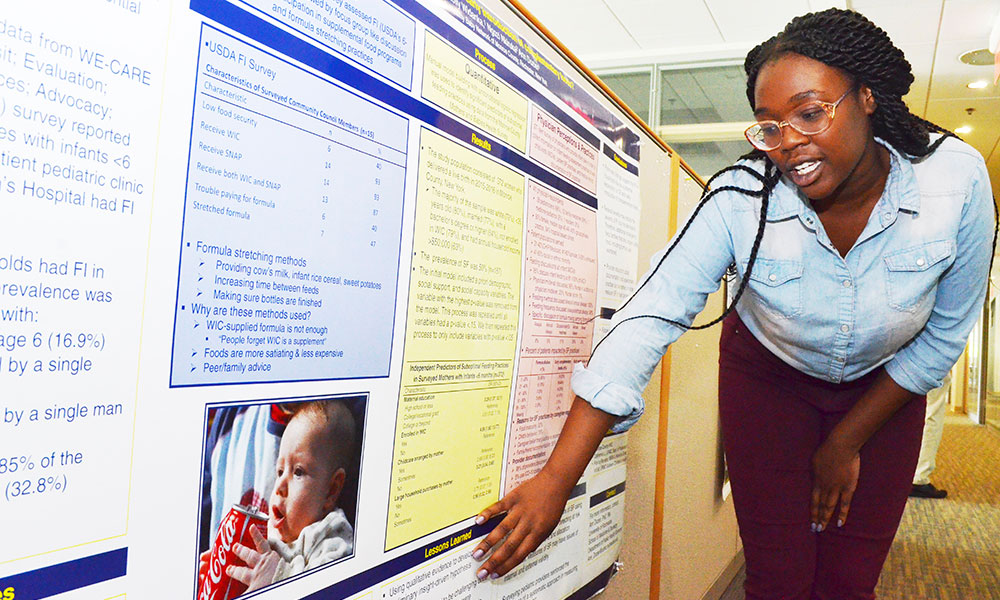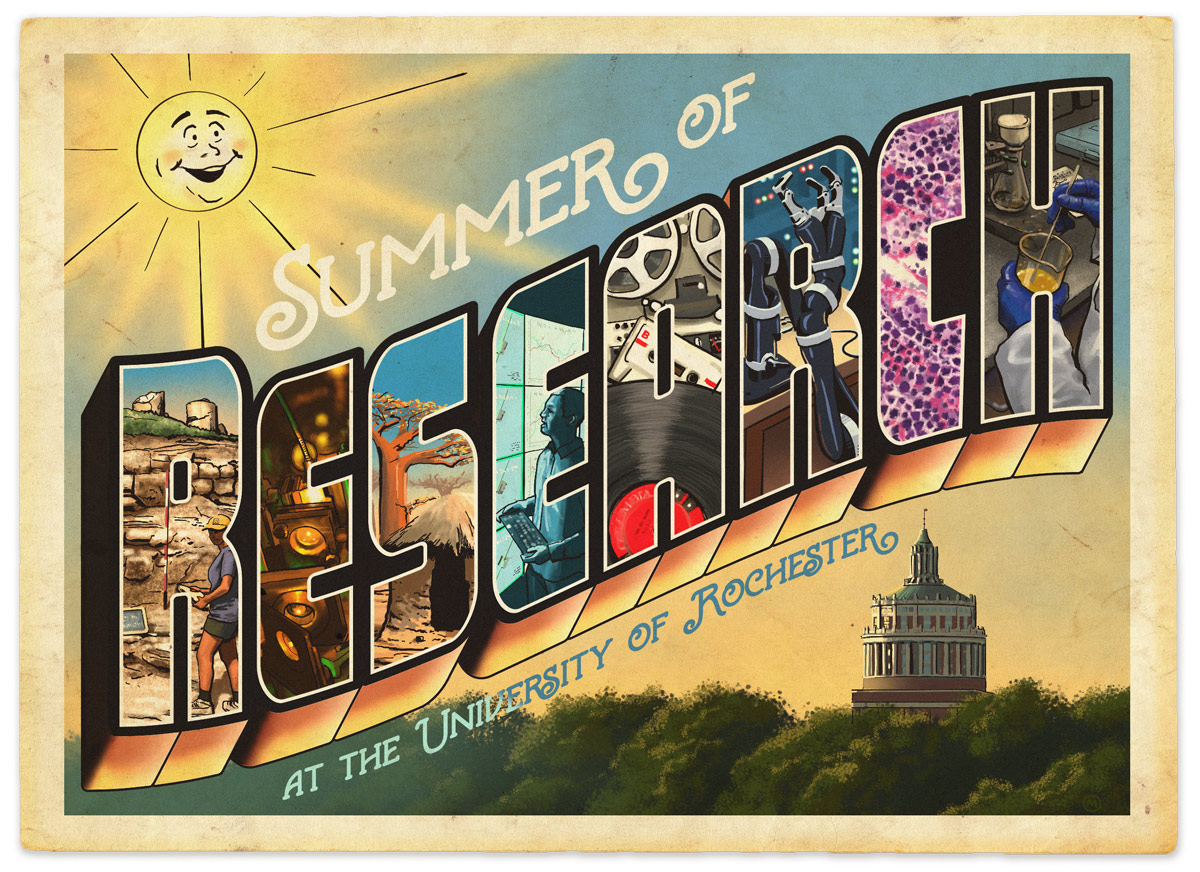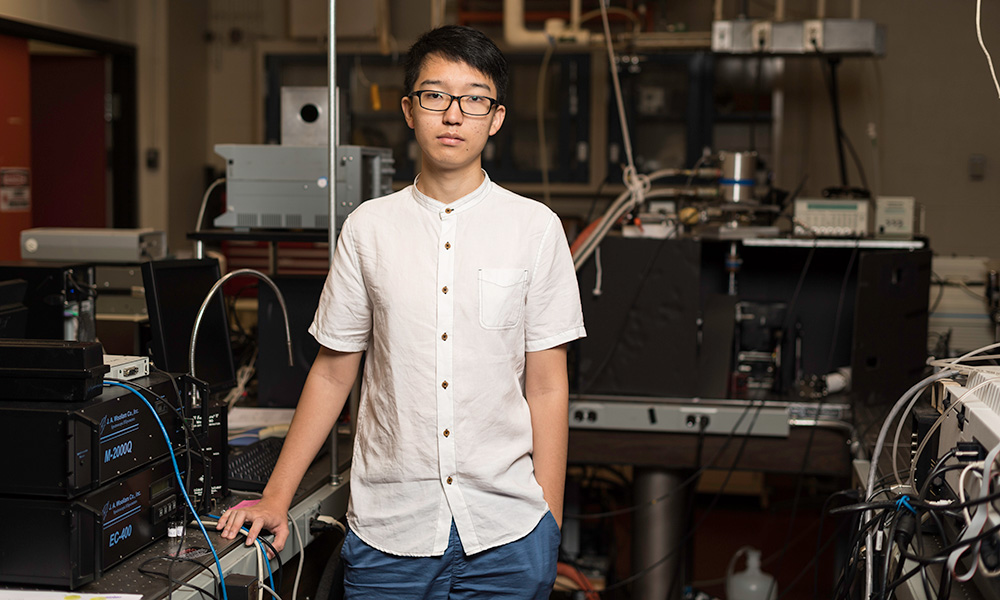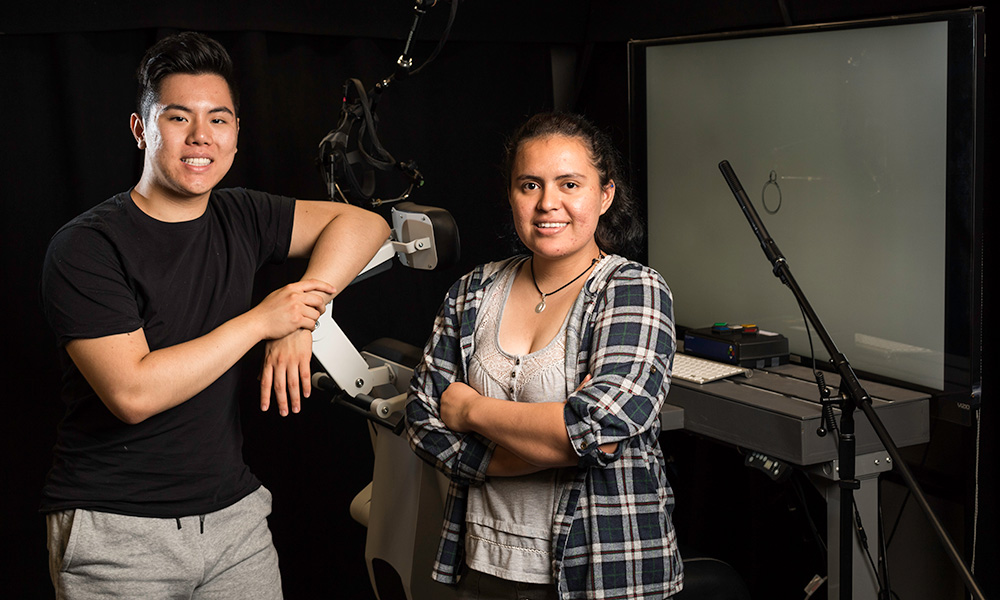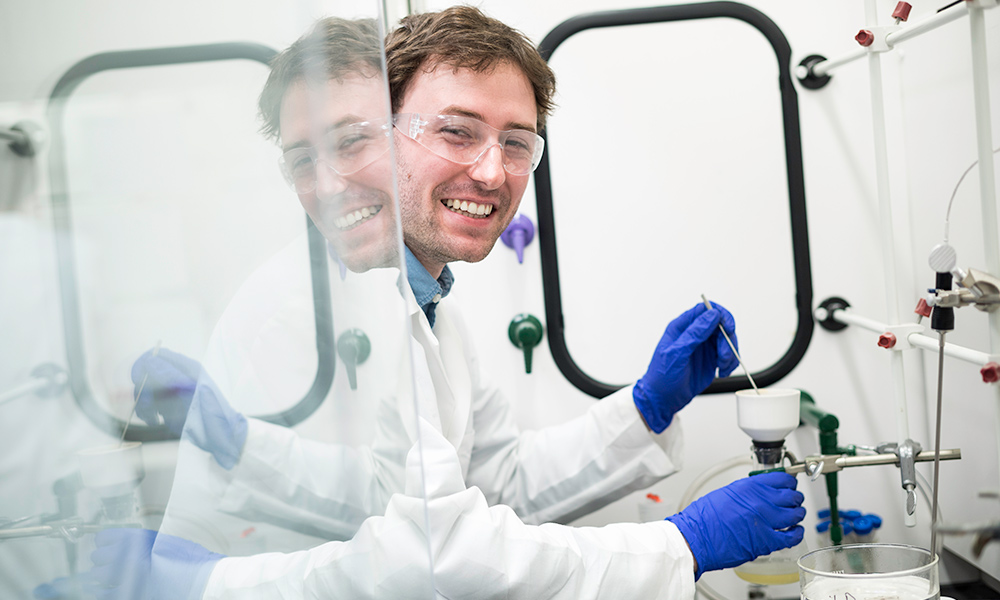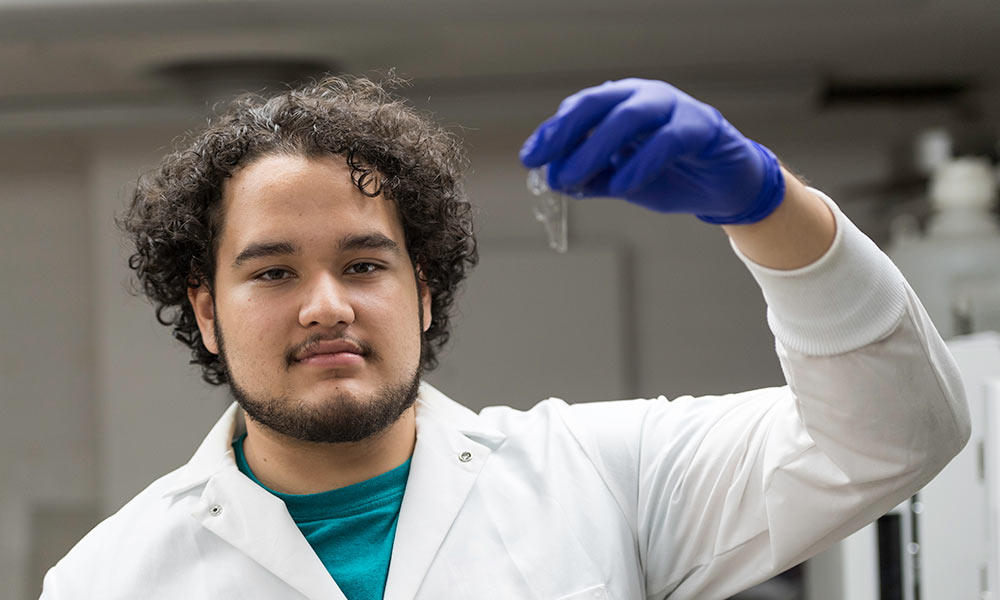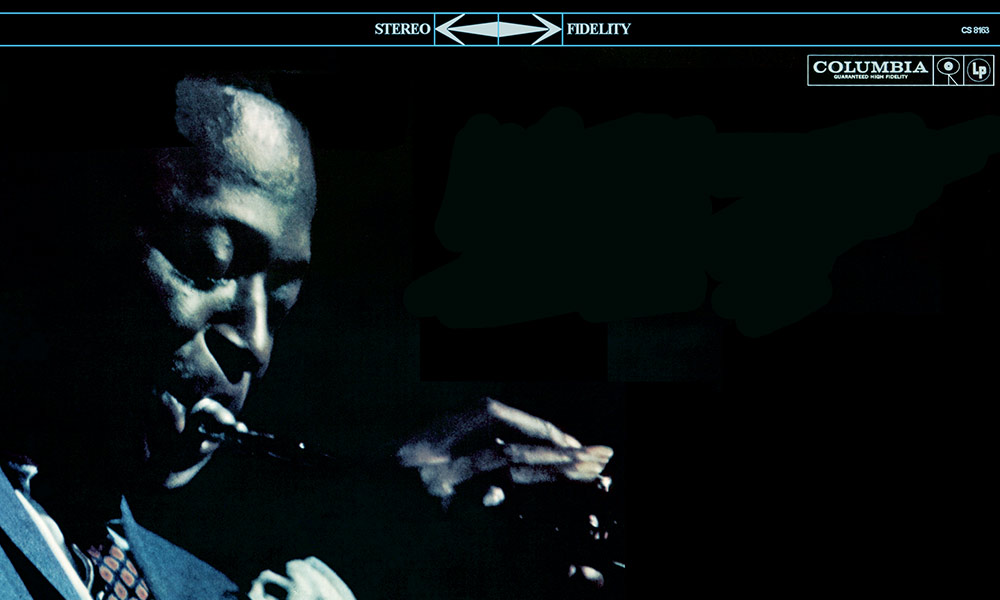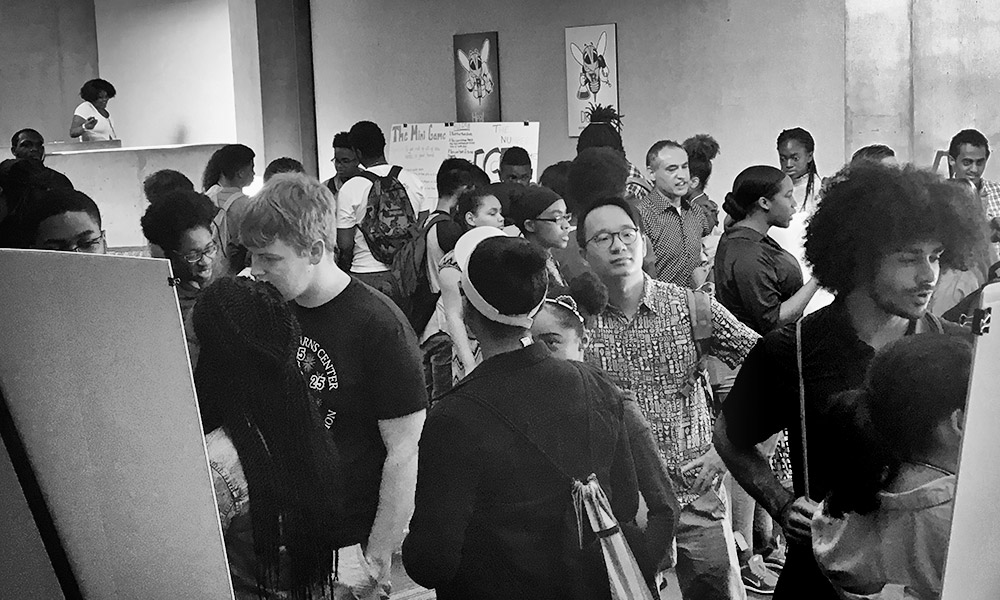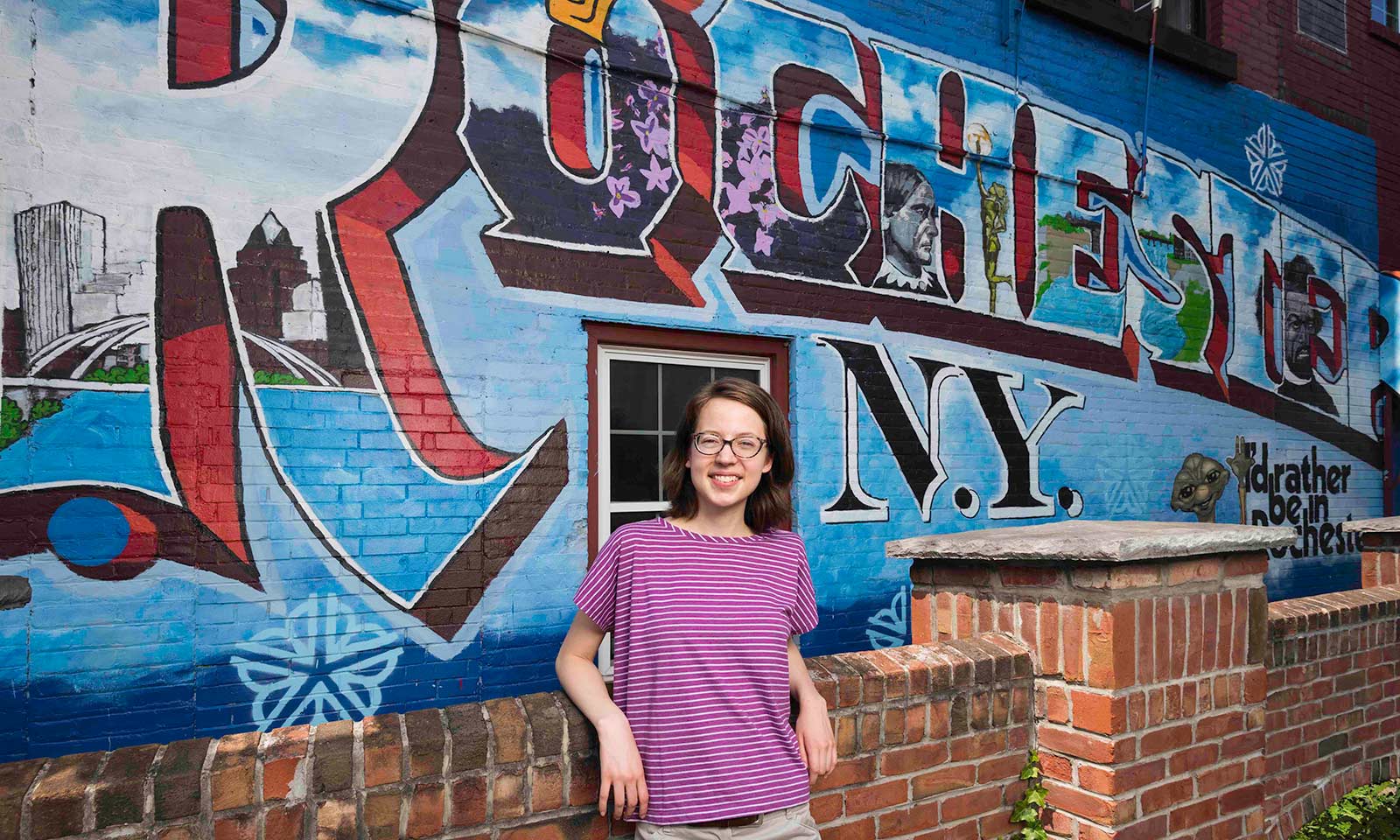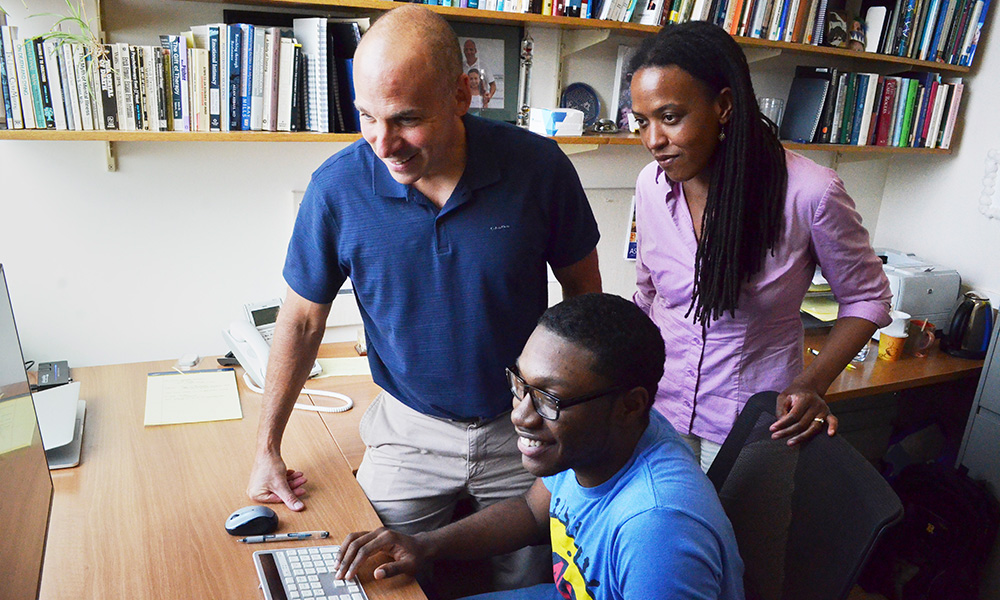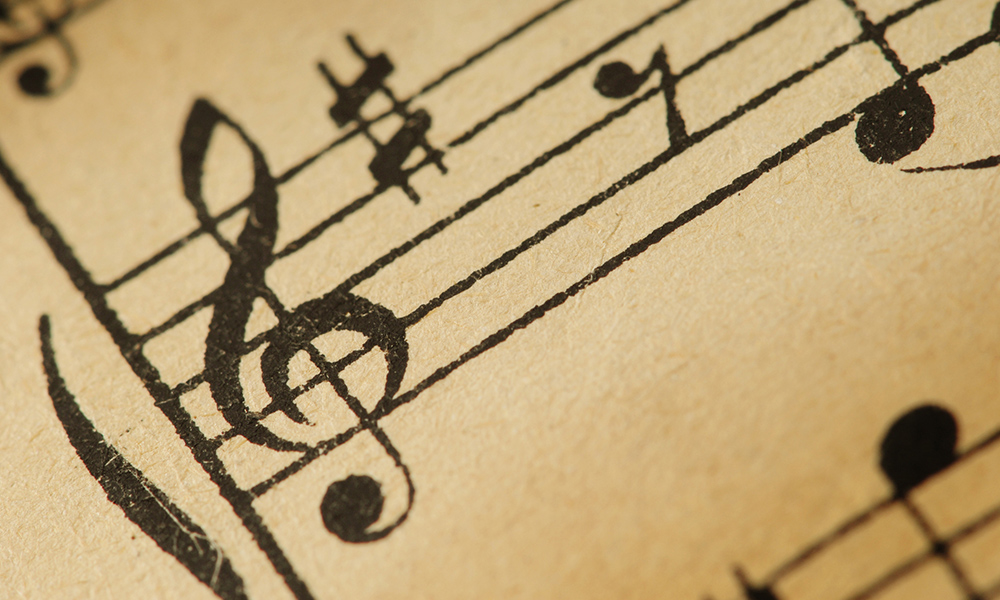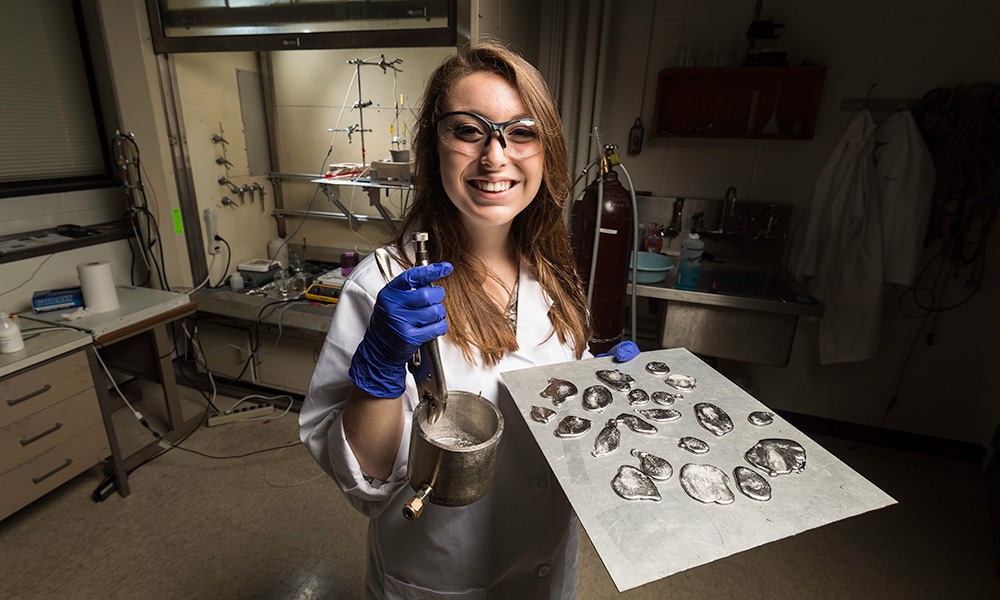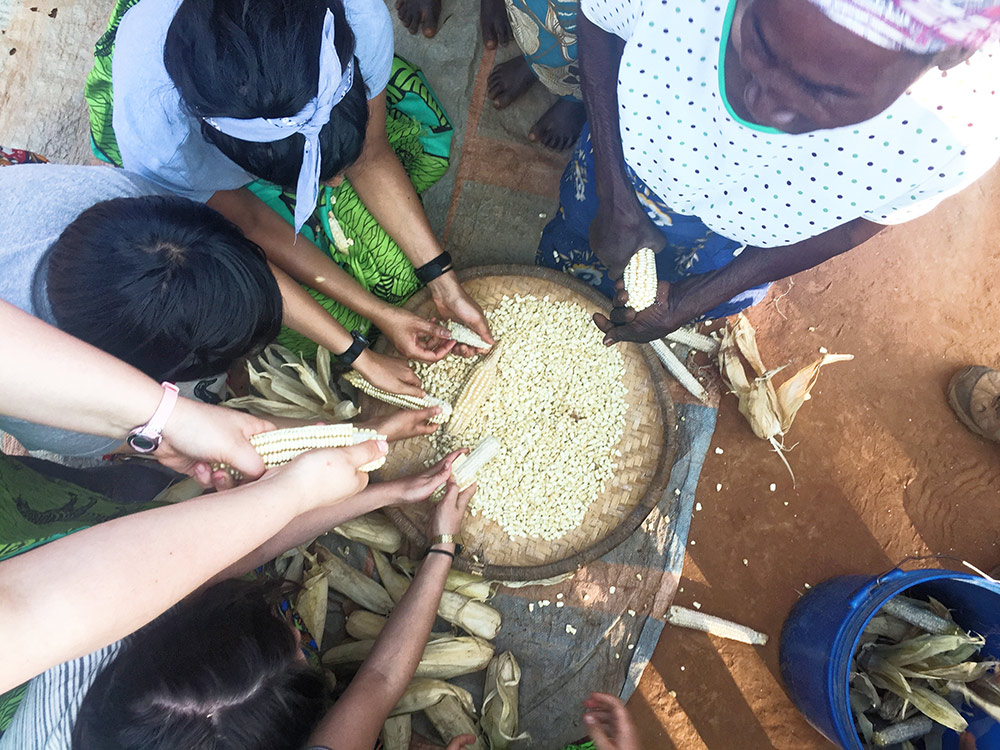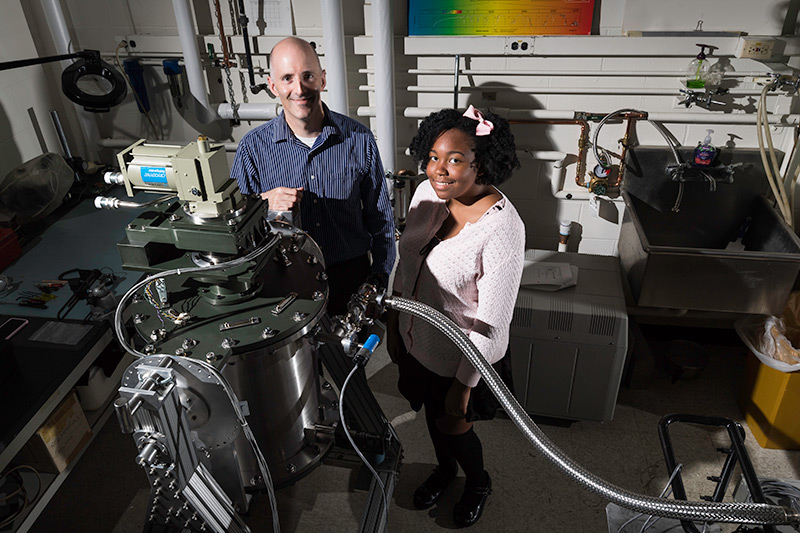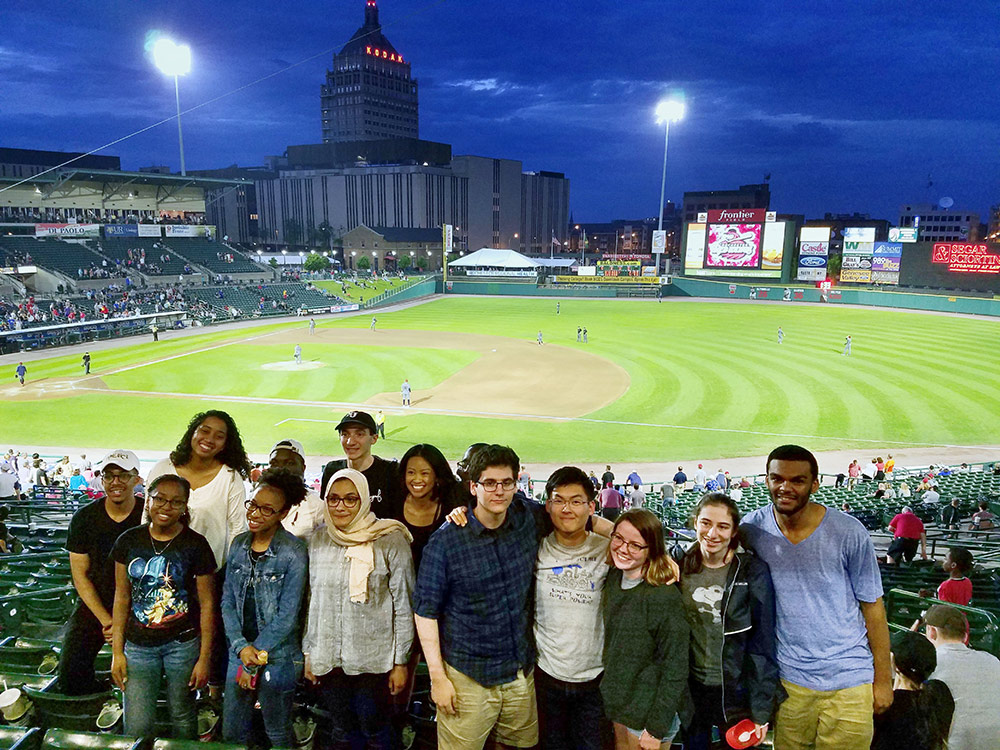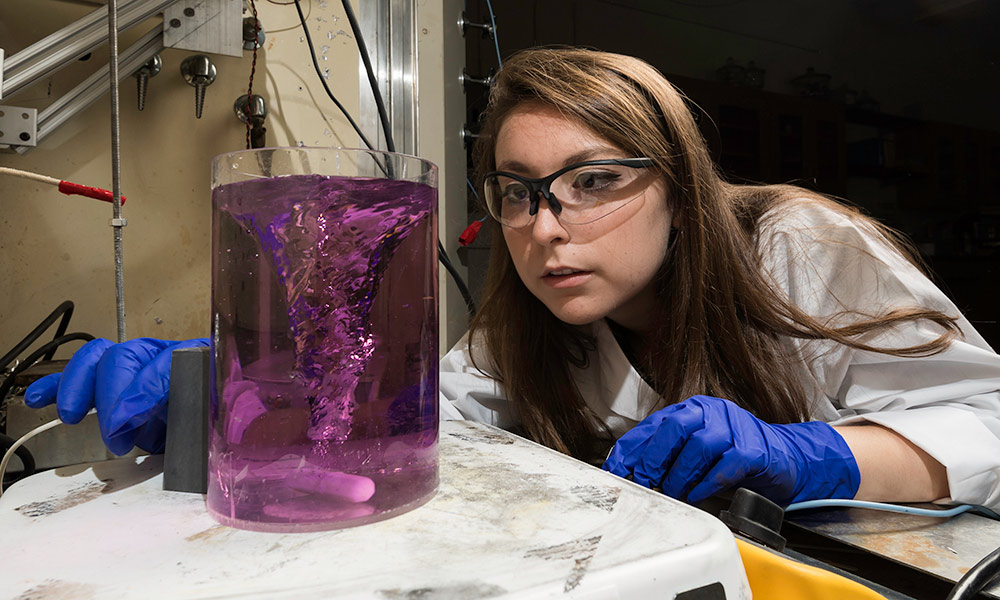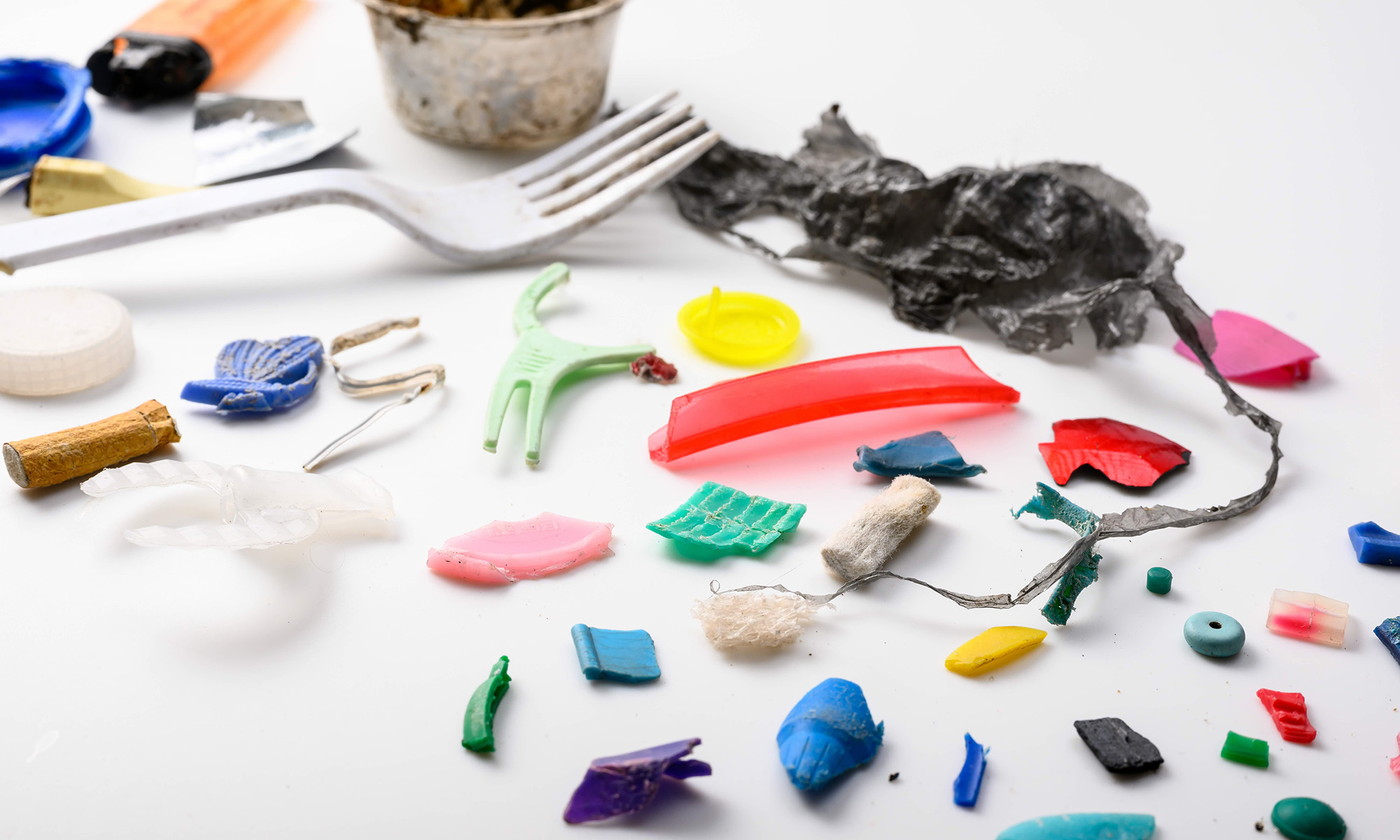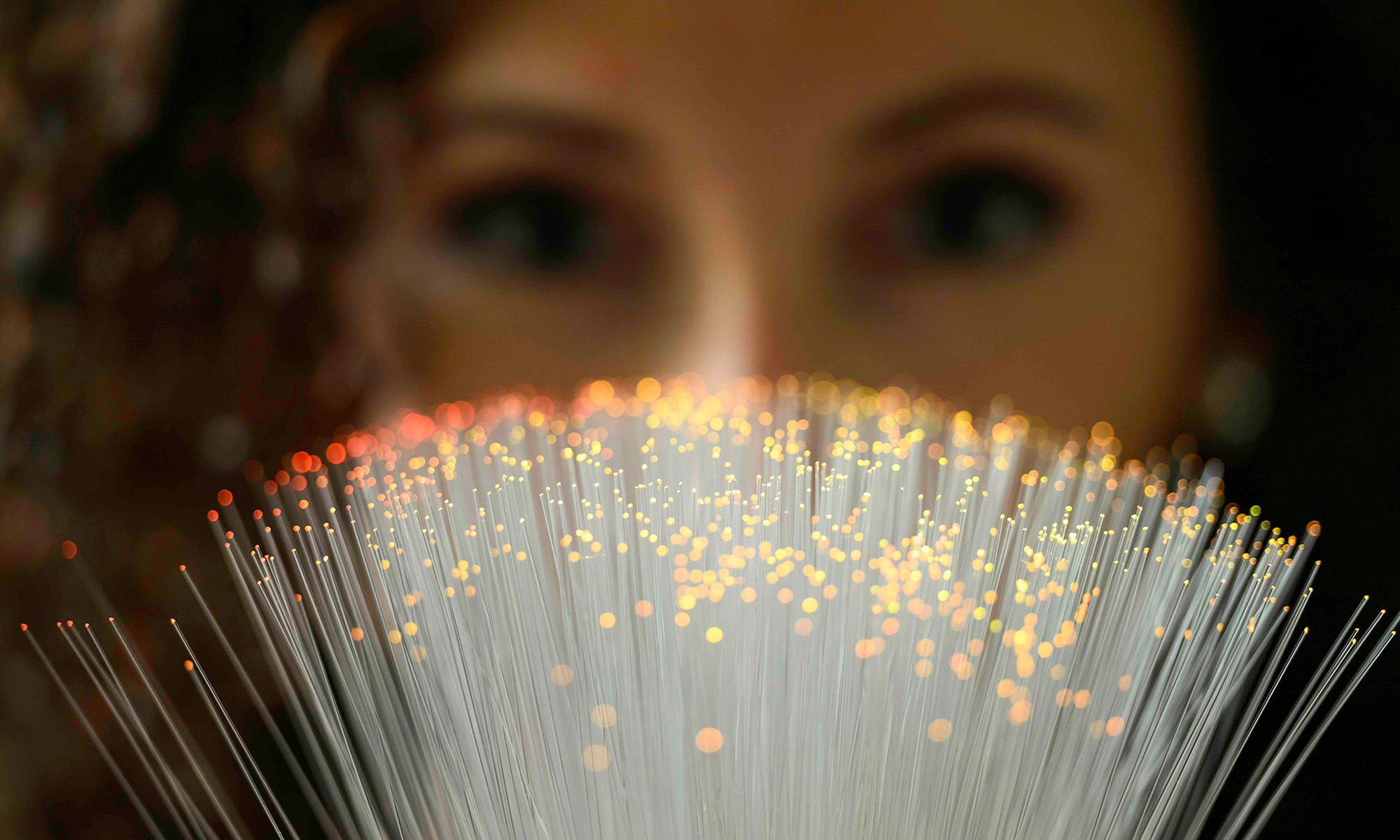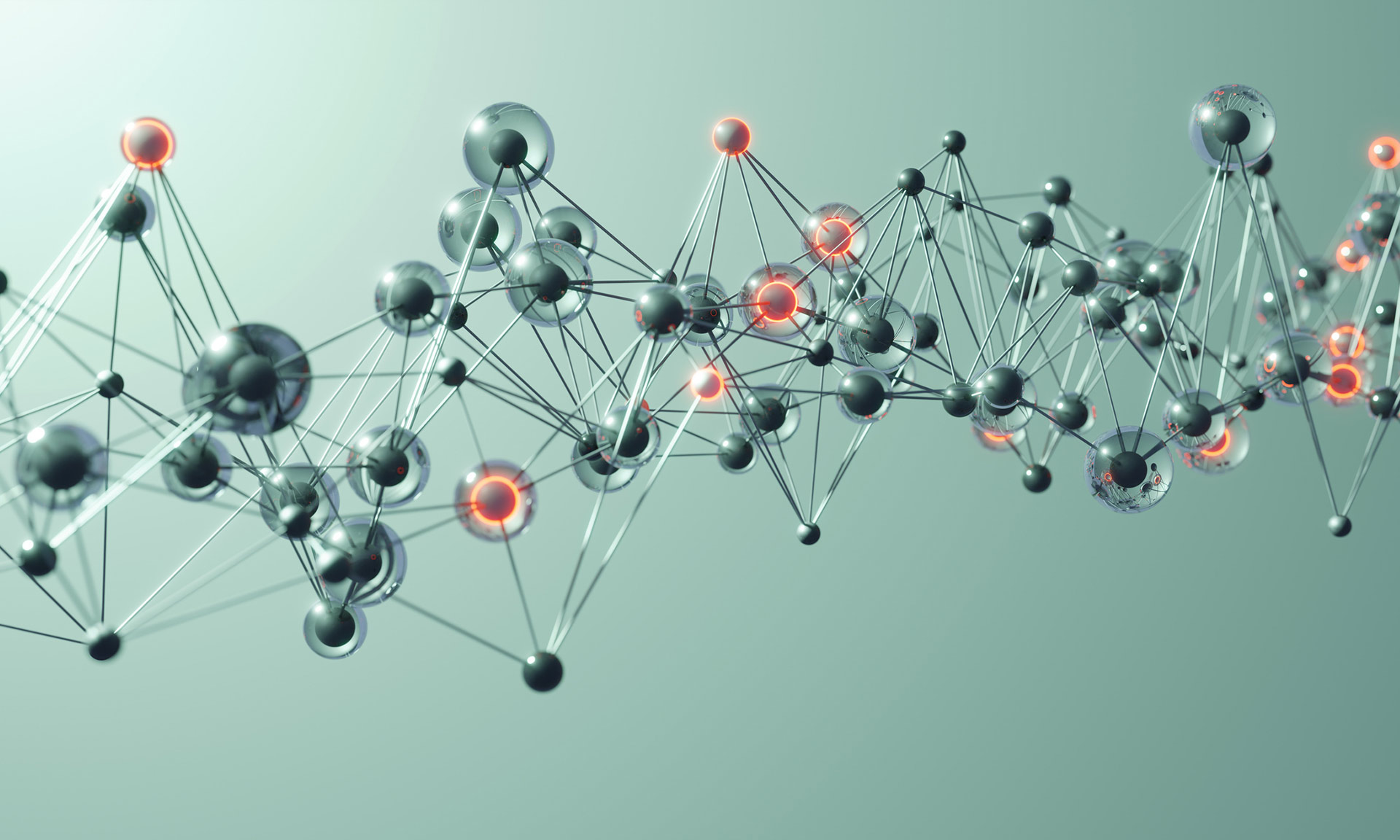August 3, 2017
Creating communal spaces through public art
As part of the Take Five Scholars Program, Madison Carter ’18 is researching how public art—such as murals, sculptures, even performance art—influences social interactions in the city of Rochester.
This summer, the English literature and environmental studies major is interning with Richard Margolis, a well-known area photographer who documents art, architecture, and landmarks, and then compiles them into searchable databases. Carter is contributing to the descriptions of each piece of public art, researching the stories associated with their creation, and contacting the artists themselves for their input. She is also identifying additional works of public art to include in the database. (University photo / J. Adam Fenster)
